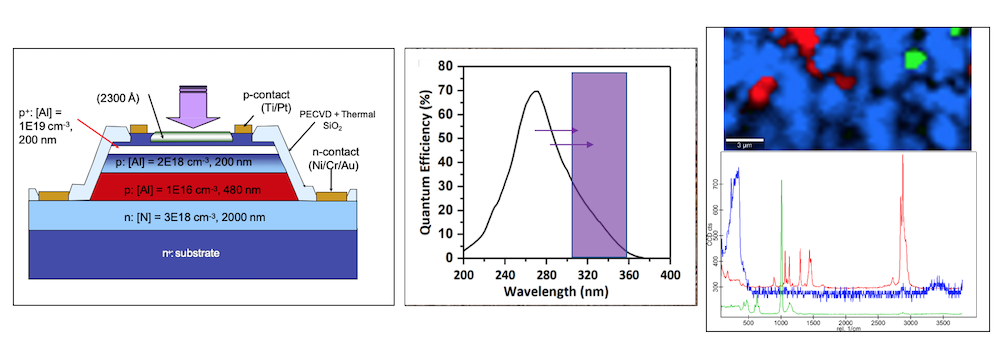Enabling in situ Raman Spectroscopic Exploration of Icy Worlds: Ultra-Violet Detector Innovation for Raman Exploration and CharacTerization (UV-DIRECT) of Ocean Worlds.
- 1University of Maryland College Park, Department of Astronomy, United States of America (dina.m.bower@nasa.gov)
- 2NASA Goddard Space Flight Center, Greenbelt, MD, United States of America
- 3Catholic University of America, Washington, DC, United States of America
- 4Army Research Laboratory, DEVCOM, Adelphi, MD, United States of America
Icy worlds of the outer solar system contain tantalizing evidence of habitability and potential life. These bodies also present extra exploration challenges due to the harsh environmental conditions at the surfaces. Thus, robust and reliable detectors are necessary for the in situ spectroscopic identification of astrobiologically relevant compounds deposited on the icy surface, entrained in thick atmospheres, or rafted in plumes. In addition, the distinction between prebiotic, extant, and relict organic molecules in such environments is needed to address life detection goals. The Ultra-Violet Detector Innovation for Raman Exploration and CharacTerization (UV-DIRECT) of ocean worlds project focuses on the development SiC- avalanche photodiode (APD) technology for UV-Raman spectroscopy and Raman imaging. Si-based Single Photon Avalanche Diodes (SPADs) have been developed for time resolved Raman spectroscopy in recent years, but SiC (Silicon Carbide) APD detectors have advantages over them. Our detector is an ultra-compact, radiation and temperature tolerant, visible blind device that has high quantum efficiency (QE) in the DUV (~260 nm) but poorer performance in the near ultraviolet (NUV) between 300-340nm that is important for Raman Spectroscopy. Our approach to improve this combines a series of numerical models with laboratory testing to enhance the QE response and ultimately the single photon detection efficiency in the NUV (~340 nm). Raman spectroscopy has established itself in current missions as an information-rich, non-contact, non-destructive method for identifying and characterizing inorganic and organic compounds in a wide variety of planetary materials. UV/NUV-Raman spectroscopy is well-suited to characterizing plume materials and surface ice deposits, since it especially sensitive to organic compounds and inorganic salts improved sensitivity due to the combination of resonance effects and the lack of background fluorescence and less risk of sample damage compared to excitation with wavelengths <260 nm. We are also improving upon the chip fabrication process to ensure a pathway forward to a smaller form factor for a linear array to enable Raman spectroscopic imaging. Acquiring point spectra can give information about what compounds are present, but Raman imaging enables the full characterization of target areas revealing spatial relationships between compounds and improves the capability of detecting biosignatures.
 Figure 1. UV-DIRECT is based on SiC-APD technology with the goal of pushing the capabilities of UV-Raman spectroscopy and Raman imaging for the exploration of icy worlds.
Figure 1. UV-DIRECT is based on SiC-APD technology with the goal of pushing the capabilities of UV-Raman spectroscopy and Raman imaging for the exploration of icy worlds.
How to cite: Bower, D., Aslam, S., Hewagama, T., Gorius, N., Sampath, A., Schuster, J., Smith, J., Trieu, Q., Kelley, S., and Nehmetallah, G.: Enabling in situ Raman Spectroscopic Exploration of Icy Worlds: Ultra-Violet Detector Innovation for Raman Exploration and CharacTerization (UV-DIRECT) of Ocean Worlds., European Planetary Science Congress 2021, online, 13–24 Sep 2021, EPSC2021-330, https://doi.org/10.5194/epsc2021-330, 2021.

